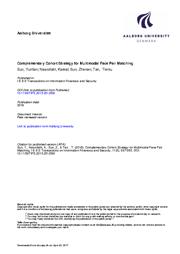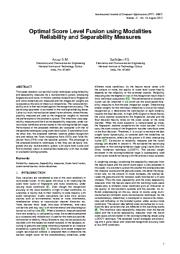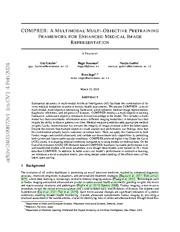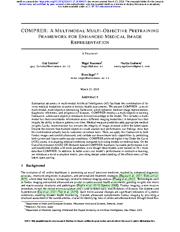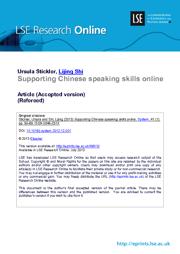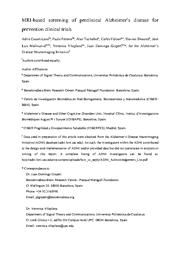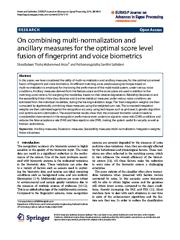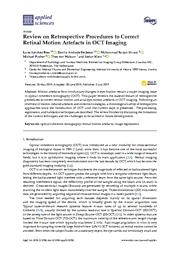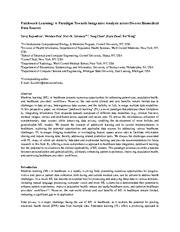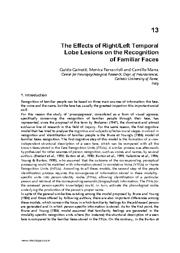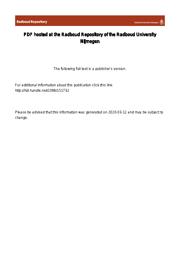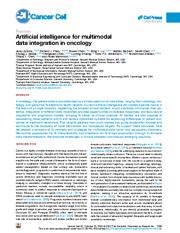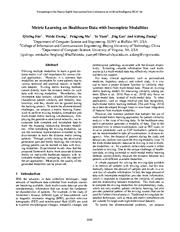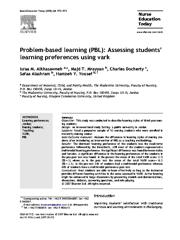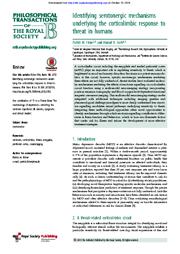A copy of this work was available on the public web and has been preserved in the Wayback Machine. The capture dates from 2019; you can also visit the original URL.
The file type is application/pdf.
Filters
Complementary Cohort Strategy for Multimodal Face Pair Matching
2016
IEEE Transactions on Information Forensics and Security
By applying the proposed multimodal complementary cohort strategy, we achieve the best performance on our face pair matching task. ...
To augment its robustness to complicated facial variations, we further employ multiple face modalities owing to their complementary value to each other for the face pair matching task. ...
Neslihan Kose from the Department of Multimedia Communications, EURECOM, for providing us with the KinectFaceDB database. ...
doi:10.1109/tifs.2015.2512561
fatcat:mvuxyk43crhp7ma6dfnh4sqlmm
Optimal Score Level Fusion using Modalities Reliability and Separability Measures
2012
International Journal of Computer Applications
This paper presents two optimal fusion techniques using reliability and separability measures for a multibiometric system, employing fingerprints and voice. ...
Match score formula for the reference and the test print is given by [28] , M atchingscore = 100N pair max {M, N } (3) where N pair is the number of matched minutiae, M is the number of minutiae in the ...
RELATED WORK Jain et al. in 1999 introduced a multimodal biometric system that integrates face, fingerprints and voice [9] . ...
doi:10.5120/8123-1953
fatcat:ax7gndhrdbef3ekucg2nkvlswm
COMPRER: A Multimodal Multi-Objective Pretraining Framework for Enhanced Medical Image Representation
[article]
2024
arXiv
pre-print
This includes a multimodal loss that consolidates information across different imaging modalities; A temporal loss that imparts the ability to discern patterns over time; Medical-measure prediction adds ...
In addition, to better assess our model's performance in contrastive learning, we introduce a novel evaluation metric, providing deeper understanding of the effectiveness of the latent space pairing. ...
This multimodal training maximizes the similarity of embeddings from matching image pairs and minimizes it for non-matching pairs within a batch. ...
arXiv:2403.09672v1
fatcat:3s4rzokosbhyrosxnqwpqrauam
COMPRER: A MULTIMODAL MULTI-OBJECTIVE PRETRAINING FRAMEWORK FOR ENHANCED MEDICAL IMAGE REPRESENTATION
[article]
2024
medRxiv
pre-print
This includes a multimodal loss that consolidates information across different imaging modalities; A temporal loss that imparts the ability to discern patterns over time; Medical-measure prediction adds ...
In addition, to better assess our model's performance in contrastive learning, we introduce a novel evaluation metric, providing deeper understanding of the effectiveness of the latent space pairing. ...
This multimodal training maximizes the similarity of embeddings from matching image pairs and minimizes it for non-matching pairs within a batch. ...
doi:10.1101/2024.03.17.24304415
fatcat:rq6cqek56bfchbqrrkitfdivzy
Supporting Chinese speaking skills online
2013
System (Linköping)
Recommendations are made to improve the online teaching strategies and task design, specifically for improving Chinese speaking skills in synchronous online environments. ...
The study uses a combination of qualitative methods (observation, stimulated recall and thematic analysis) and multimodal transcription supported by some quantitative methods (comparison of frequency). ...
Acknowledgments We would like to thank all participants in the online Chinese tutorials for their patience and their contributions. 谢 谢你们. ...
doi:10.1016/j.system.2012.12.001
fatcat:ye3fer5mpjc7tnwtlzxewfcehy
MRI-Based Screening of Preclinical Alzheimer's Disease for Prevention Clinical Trials
2018
Journal of Alzheimer's Disease
This protocol could foster the development of secondary prevention strategies for AD. ...
Models were trained on public ADNI data and validated on an independent local cohort. ...
However, prevention trials in the PreAD stage face crucial ethical and logistic challenges. ...
doi:10.3233/jad-180299
pmid:30010132
fatcat:5x76ggug3fgtbhzfuqajvctqmu
On combining multi-normalization and ancillary measures for the optimal score level fusion of fingerprint and voice biometrics
2014
EURASIP Journal on Advances in Signal Processing
An efficient matching score preprocessing technique based on multi-normalization is employed for improving the performance of the multimodal system, under various noise conditions. ...
Ancillary measures derived from the feature space and the score space are used in addition to the matching score vectors, for weighing the modalities, based on their relative degradation. ...
Match score formula for the reference and the test print is given by [24] Matching score = 100N pair max{M, N} where N pair is the number of matched minutiae, M is the number of minutiae in the template ...
doi:10.1186/1687-6180-2014-10
fatcat:qxunlmckubd35d6xemmpzav7dq
Review on Retrospective Procedures to Correct Retinal Motion Artefacts in OCT Imaging
2019
Applied Sciences
Following an overview of motion induced artefacts and correction strategies, a chronological survey of retrospective approaches since the introduction of OCT until the current days is presented. ...
By 2011, the combination of multiple data (complementary and multimodal) gained a special interest for improving the motion correction. ...
Figure 7 . 7 Cumulative bar plot showing the number of reviewed publications that used OCT single, OCT complementary, and multimodal acquisitions for correcting the retinal motion. ...
doi:10.3390/app9132700
fatcat:da2uhcwsnfemvljhhfsay7ct5e
Learning across diverse biomedical data modalities and cohorts: Challenges and opportunities for innovation
2024
Patterns
We argue that C4 approaches could pave the way for ML models that are both holistic and widely applicable. ...
This review studies the utility of cross-cohort cross-category (C4) integration in such contexts: the process of combining information from diverse datasets distributed across distinct, secure sites. ...
Furthermore, these multimodal models often lack strategies for clinical deployment and bias mitigation 17 . ...
doi:10.1016/j.patter.2023.100913
pmid:38370129
pmcid:PMC10873158
fatcat:gibxi7ta2fhnxa55oc6srlvaha
The Effects of Right/Left Temporal Lobe Lesions on the Recognition of Familiar Faces
[chapter]
2011
New Approaches to Characterization and Recognition of Faces
during administration of a test similar to the Benton and Van Allen (1968) face matching test. ...
Thus, several authors have documented a prevalent activation of the right temporal lobe for famous faces (Ishai et al., 2005) , for famous -contrasted with newly learned -faces (Leveroni et al., 2000 ...
The first section presents an architecture for face recognition based on Hidden Markov Models; it is followed by an article on coding methods. ...
doi:10.5772/22709
fatcat:4lg6tfgcnfdl7pp5piyp3hsad4
Predicting the Naturalistic Course of Major Depressive Disorder Using Clinical and Multimodal Neuroimaging Information: A Multivariate Pattern Recognition Study
2015
Biological Psychiatry
Neural responses to emotional salient faces more accurately predicted outcome than clinical data. ...
RESULTS: Chronic patients could be discriminated from patients with more favorable trajectories from neural responses to various emotional faces (up to 73% accuracy) but not from structural MRI and functional ...
Contrasts used to train the classifier were angry . scrambled faces, fearful . scrambled faces, happy . scrambled faces, and sad . scrambled faces. See Supplement 1 for details. Tower of London Task. ...
doi:10.1016/j.biopsych.2014.11.018
pmid:25702259
pmcid:PMC4449319
fatcat:fhuf263kzfbtjaifgi4pfgziqi
Artificial intelligence for multimodal data integration in oncology
2022
Cancer Cell
To support these advances, here we present a synopsis of AI methods and strategies for multimodal data fusion and association discovery. ...
We outline approaches for AI interpretability and directions for AI-driven exploration through multimodal data interconnections. ...
cohorts. ...
doi:10.1016/j.ccell.2022.09.012
pmid:36220072
pmcid:PMC10655164
fatcat:b6r4wl4qijbafp3rjvrwp5epl4
Metric Learning on Healthcare Data with Incomplete Modalities
2019
Proceedings of the Twenty-Eighth International Joint Conference on Artificial Intelligence
Utilizing multiple modalities to learn a good distance metric is of vital importance for various clinical applications. ...
However, it is common that modalities are incomplete for some patients due to various technical and practical reasons in healthcare datasets. ...
Acknowledgments The authors would like to thank the anonymous reviewers for their valuable comments. ...
doi:10.24963/ijcai.2019/490
dblp:conf/ijcai/SuoZM00Z19
fatcat:vlewuu4pgng3ppmdsgygwuokrm
Problem-based learning (PBL): Assessing students' learning preferences using vark
2008
Nurse Education Today
In the pre-test 54% of students had a multimodal preference whereas 68% of students have a multimodal preference post-test. ...
Results: The dominant learning preference of the students was the read/write preference followed by the kinesthetic, still most of the students represented a multimodal learning preference. ...
They are more likely to be able to match their preferences with whatever mode(s) are being used. ...
doi:10.1016/j.nedt.2007.09.012
pmid:17983691
fatcat:jqr55hfe4rfg5euzmrvv5glxse
Identifying serotonergic mechanisms underlying the corticolimbic response to threat in humans
2013
Philosophical Transactions of the Royal Society of London. Biological Sciences
In a multi-modal neuroimaging study using the same threat-related faces matching BOLD fMRI paradigm as was used in our 5-HT 1A autoreceptor study, Rhodes et al. ...
By evaluating the association between 5-HT 1A autoreceptor binding and threat-related amygdala reactivity within a single cohort, this novel multimodal neuroimaging strategy offered the opportunity to ...
doi:10.1098/rstb.2012.0192
pmid:23440464
pmcid:PMC3638383
fatcat:xqc54hgdf5d53cejd7vi43fzaq
« Previous
Showing results 1 — 15 out of 2,376 results

